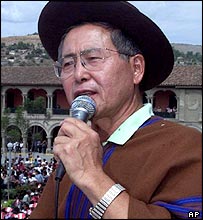 |
Craig White's Literature Courses Hispanic / Latino + Latino / Latina, Latin@, Latinx see also mestizo, Creole, race / ethnicity, Mexican Americans as immigrant and minority |
 thanks to http://spanishathome.com/hispanic-vs-latino-whats-the-difference/ |
In all racial or ethnic groups, identifying names change or evolve with history, fashion, or perspective.
Examples:
-
colored people > negroes > blacks > Afro-Americans > African Americans > people of color?
-
Indios or Indians > Aborigines > "the Red Man" > Native Americans > First Peoples, First Nations
-
white people > Anglos > Dominant Culture > DWEMs
-
love that dare not speak its name > homosexuals > gays & lesbians > LGBT+
"Hispanic" or "Latino" are roughly equivalent signs serving as umbrella terms for all Spanish-American or Latin American groups: Puerto Rican, Dominican, Colombian, Salvadoran, Venezuelan, Mexican, etc.
Following this definition, all Mexicans or Mexican Americans are Hispanic or Latino, but all Hispanics or Latinos are not Mexicans.
![]()
When to use Hispanic or Latino?
Terms are generally equivalent, comparable to Native American / American Indian or Black / African American, but some preferences may be observed.
Hispanic: East Coast and Heartland; bureaucratic or official categories
Latino: West Coast, academic uses
As an authenticity-bonus for Latino, the term may indicate gender as Latino / a, or Latino / Latina, Latin@, Latinx, or Latino in specifically male applications and Latina in references to women.
Overall, though, Latinos or Hispanics don't often use these terms except for special trans-ethnic or political references. Compare South Asians.
As American Indians prefer tribal names like Choctaw or Cherokee, Hispanics or Latinos identify more with specific national names, e.g. Mexican, Dominican, Puerto Rican, etc., though this tendency may break down with increasing intermarriage between distinct Hispanic / Latino peoples.
Each Hispanic sub-group seems to have its own special relationship with the USA.
e. g., Puerto Rico: is it a commonwealth, a territory, or a state?
Cuban Americans: immigrants or exiles?
![]()
Mexican Americans are the only Hispanic ethnic group featured in American Minority Literature (LITR 4332 & LITR 5831).
Puerto Ricans, Cuban Americans, Dominicans, and other Latino-American groups appear more in American Immigrant Literature (LITR 4333 & LITR 5831im).
Mexican-Americans appear in both minority and immigrant courses.
Rationale for distribution: while Mexican Americans are generally regarded as immigrants, their history and narratives may resemble those of minorities as much as immigrants, esp. in terms of "forced contact" or "involuntary participation" with America's dominant culture, especially through territorial conquests of Mexican-American War.
However, relations between Mexican America and Anglo-America cannot easily be reduced to the same equation as the relations between African America, Native America, and the dominant white culture—too many unique cultural differences among all three.
![]()
Hispanics or Latinos are not a racial group but an ethnic group.
Ethnic group, ethnic identity, or ethnicity: an ethnic group may be defined less by race, biology, genetics, than by culture, behavior, traditions, circumstances, or especially language.
Race or descent may be and often is a factor in ethnic identity but only one component that may be balanced by other factors like history, class, locale, language, culture.
Ethnic group or ethnicity is now used in academic discourse more often than race.
Race may have biological or genetic connotations like skin color, facial features, body morphs, etc. (which sounds empirical but may not be, and in any case makes a small part of anyone's genetic code)
Examples of racial minorities:
-
African American / black / Negro race historically defined by African descent.
-
American Indians may or may not be included in a tribe or allowed to live on a reservation based on their percentage of Native American ancestry. (E. g., my father-in-law was technically capable of membership in the Eastern Cherokees because he was 1/8 Cherokee.)
Race is increasingly observed as a "cultural construct." Much recent research suggests "race" is not based in biological or genetic nature but is instead a human invention that has gained acceptance as common sense based on superficial differences. There's really only one race: the human race. The genetic variability within a "race" is far greater than the genetic difference between races.
Overall, ethnicity is a broader, more flexible and inclusive term than race, plus it avoids some sensitive areas of race (e. g., if you discuss the "genetics" or blood-lines that constitute race, inevitably you're talking about sex).
In the case of African America, for instance, discussion of "race" opens not only to genetic inheritance from Africa but genetic inheritance from white slavemasters or slavedrivers who fathered children by black slave women. How much are schoolchildren or their parents ready to talk about that?
Therefore a growing tendency to talk about "ethnic groups" instead of "races."
This trend is also compelled by recent emergence of Hispanic and Latino presence in North America.
Hispanic or Latino is not a race but an ethnic group.
Hispanic identity tends not to be identified by race (though race may be a factor) but by language(s), religion, geography.
A "Hispanic" may be a Hispanic and be of European descent, of American Indian descent, of African descent, of Asian descent . . . or any combination of these.
Plus European descent doesn't simply mean Spanish but may include German, Irish, Italian, and / or Portuguese, among others.
Most familiar combinations: "mestizo" + creole but many more historical combinations, prestige-levels, etc.
Other notable examples where "Hispanic" involves surprising racial backgrounds.
Alberto Fujimori, former president of Peru


|
|
|
Don Francisco of Sabado Gigante--real name is Mario Luis Kreutzberger Blumenfeld
My wife's gastroenterologist is named Franz E. Schneider:

UHCL's recent Associate Vice President of Academic Affairs, Yvette Bendeck, is descended from a Persian / Iranian family from Honduras. In reporting on diversity, she counts as "Hispanic."

American immigrants from the Dominican Republic are often characterized as African Americans because of strong elements of African descent in the Dominican Republic, but most Dominicans are more inclined to think of themselves as Hispanics than as African Americans.
Junot Diaz:


Luis Tiant, major league pitcher of the 1960s-70s, was born in Cuba but played
in the minor leagues in my Southern hometown, where he expressed dissatisfaction
with racism against blacks, to which he as a Hispanic / Latino was unaccustomed.
![]()
What to do with this knowledge?
If race doesn't define "Hispanics / Latinos," what does?
If race doesn't define "Hispanics / Latinos," what does?
"cultural categories" instead of racial or biological categories:
| cultural categories | Latino / Hispanic characteristics |
| language? | Spanish, Portuguese, German, English, plus plenty of Indian languages |
| religion? | Traditional: Catholic plus or
minus Indian folk beliefs & traditions, magic, healing, curanderas Increasing: Evangelical Protestantism (Baptists, Methodists, Assembly of God, Jehovah's Witnesses, Mormons, charismatic / Pentecostal |
| geography? | Central and South America, California, Southwestern USA,
Mexico, parts of Caribbean, Chicago; + Filipino?
Overall pattern: south > north contrast Anglo America: east > west |
| racial makeup? | "mestizo" or Indian / Spanish mix may
prevail, but also African, Asian, other European backgrounds (incl.
Irish, German, Italian, just like in USA) Hispanics not strictly defined by race (though some racial stereotyping prevails) |
| other categories? |
outcomes:
![]() American
Indian identity is somewhat less suppressed in Latin America than in North America or USA:
intermarriage between
Europeans and Indians was more common in Latin America than USA (as result of
demographic settlement patterns).
American
Indian identity is somewhat less suppressed in Latin America than in North America or USA:
intermarriage between
Europeans and Indians was more common in Latin America than USA (as result of
demographic settlement patterns).
![]() In Mexico, the "mestizo" identity is fairly
normal. In the USA, until recently racial mixing has been either legally repressed or regarded
socially as highly
sensitive, with terms like bi-racial, mixed-blood, half-breed, mulatto, etc.
In Mexico, the "mestizo" identity is fairly
normal. In the USA, until recently racial mixing has been either legally repressed or regarded
socially as highly
sensitive, with terms like bi-racial, mixed-blood, half-breed, mulatto, etc.
Distinction between North American and Central American / Hispanic attitudes toward race
![]() North Americans
historically think of races as "pure,
permanent, and separate"—mostly defined by white-black separation—but this
is increasingly seen as an outdated way of thinking about
race and
ethnicity
North Americans
historically think of races as "pure,
permanent, and separate"—mostly defined by white-black separation—but this
is increasingly seen as an outdated way of thinking about
race and
ethnicity
![]() Central Americans / Latinos / Hispanics think of
races as
more of a spectrum, a continuum, or a variable blend, with white on one end, black on the other, but a big brown
middle.
Central Americans / Latinos / Hispanics think of
races as
more of a spectrum, a continuum, or a variable blend, with white on one end, black on the other, but a big brown
middle.
![]() Whites and blacks
in the USA continue to intermarry at low rates, but
Hispanics intermarry with both whites and blacks, drawing both white and black
into "brown center."
Whites and blacks
in the USA continue to intermarry at low rates, but
Hispanics intermarry with both whites and blacks, drawing both white and black
into "brown center."
See Mestizo:
Instead of a racial opposition, Mestizo (or Hispanic / Latino) identities offer a spectrum of intermingling races (including African).
Spectrum of American racial / cultural future?
|
white at one end
(decreasing birth rates; aging? rural? more blending than acknowledged?) |
brown center (expanding through high birth rates + intermarriage with whites, blacks, Asians) |
black on one end (blending? decreasing birth rates?) |
Why the difference? (See Mexican Americans as immigrant, minority, or both)
North America explored and settled more by families—at least in early New England, women, wives, families accompanied male settlers, limiting intermarriage between European men and Native American women.
North American slavery lasted longer than in Central America. Considerable racial mixing occurred outside law. Until recent decades, little to no official recognition of intermarriage and racial mixture.
Central and South America were explored and settled more by groups of men without women > intermarriage, etc. between European men and Indian women
Color-code prejudice also prevails in Central and South America, but idea of purity isn't as strong as in North America—but purity remains something of a feature of "dominant culture" in USA (decreasingly except in interior, esp. Northern plains and prairie states).

thanks to
http://www.vcdwrites.com/journal/

thanks to
https://www.diffen.com/difference/Hispanic_vs_Latino

